Retail
Fashion brands in this sector need a distinctive personality to get noticed. It’s more than what you sell, it’s about what you stand for. Whether you are large or small, we create a unique brand handwriting to showcase your difference across both physical and digital retail design environments.
Evolving store design to Bahrain
New interiors concept fusing retail, hospitality & fun
Boutique wellbeing & retail evolution
New retail blend of British heritage with Eastern opulence
Retail design from London to Shanghai
Department store interior rejuvenation
Artist inspired retail boutique design
Transforming brand identity & retail offering
Brand & interiors revitalisation
London flagship store refurbishment
Creative in-store design to amplify heritage brand virtues
New retail design experience adding value to volume
Launch of first retail store in London
European roll-out for urban new store concept
Navigating into a new retail transformation
Store design: showcasing quiet luxury
Airport design: luxury food shopping
Brand repositioning & content, new retail store solutions
EXPLORE MORE OF OUR WORK
crafting the perfect retail store unique to your brand
The challenges that many multi brand online marketplaces and stores are encountering are being exacerbated by the fact that many fashion brands are moving towards their own branded spaces. This trend has been most evident in the luxury space, but also in the middle market.
Brands such as Zara are investing in enhanced, elevated brand experiences. Their recent home opening in Paris, their lifestyle 'Apartment' concept, in Rive Gauche, targeting the sophisticated shopper of the 7th arrondissement, also includes a cafe, a collaboration with Dose the celebrated Parisian coffee brand, a step which emulates a tried and tested formula, of integrating hospitality into retail spaces, an approach adopted to date largely by luxury brands.
This points to a greater appreciation on behalf of retail fashion brands of the power and importance of creating their own branded spaces, places where their unique brand universe and brand aesthetic is expressed and articulated in a three dimensional immersive way.
Innovative, smart, strong retail brands, like Zara, in touch with their target audience appreciate and leverage the power of continuously exceeding customer expectations, of anticipated and satisfying new needs and desires in ways that allow them to truly set themselves apart from the competition, and make the brand feel dynamic and exciting.
In the retail industry opening one's own branded store concept is most definitely a way for a brand to control how they are perceived and shape how their customers feel and relate to the brand. As hugely effective branding it also allows a brand to foster customer trust and build closer relationships with their customers. For example Glossier famously have used their physical stores to build their brand community, and also to gain feedback on product in a proactive way where customer are fully participating in product co creation.
This is a hugely exciting, rewarding in store experience for customers, where they really feel as if are becoming closer to the brand, and have a more interactive, engaging relationship with the brand.
In an own brand environment a successful retail brand has the ability to control the customer experience, and brand presentation.



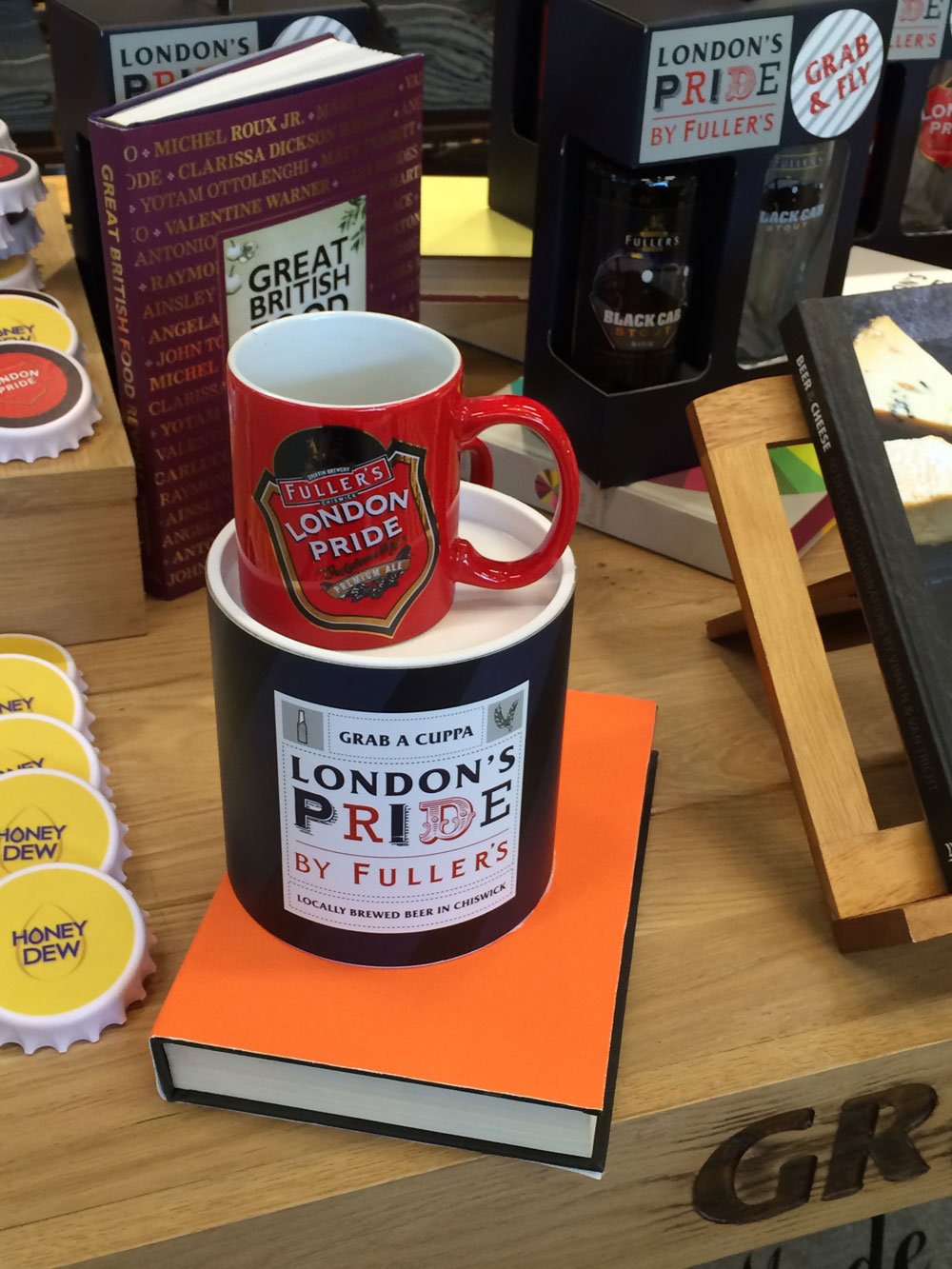
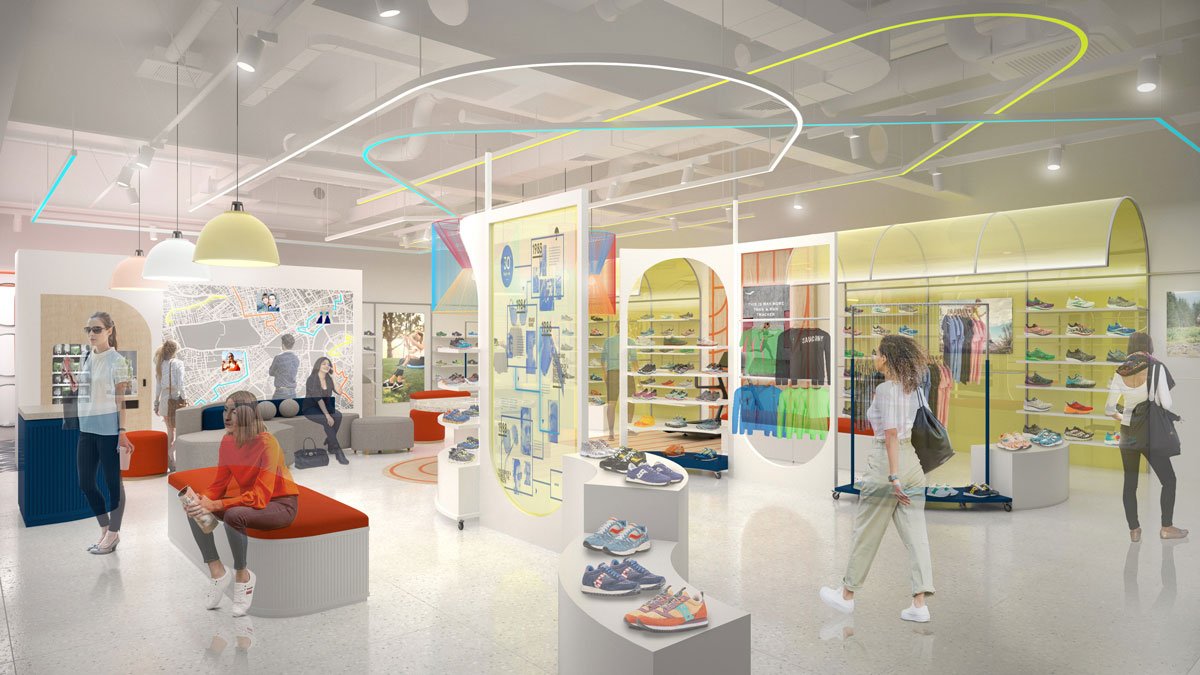
digital to physical
As well as brands recognising the value of their own stores in enhanced brand identity and visibility, one of the engines to the increased number of own brand stores is the effect of many digital brands moving into embracing brick and mortar stores as central to their omni channel strategy.
This is a result of a number of factors. Many digital brands are realising that the cost of customer acquisition exclusively online is becoming increasingly prohibitive. Consequently retail brands are exploring moves into physical stores to drive up customer acquisition, enhance brand identity and brand image resonance and visibility in order to create a more engaging, compelling strong retail brand.
Successful brands are being highly selective about locations, and site criteria in light of the statistic that a physical store increases web traffic by 40% in that location.
They are exploring ways to ensure that they deliver so much more than a transactional experience to their target audience, and looking at retail branding strategies that ensure their stores are compelling destinations, places to dwell, linger and to get closer to the brand.
Successful retail branding strategies to drive destination status include VIP areas, personal shopping, personalisation services, excellent customer service, repair and restoration services, and integrating hospitality. These are all ways to exceed customer expectations, and make them feel they are getting something more, something special and memorable from visiting the store, and creating a new, richer emotional connection with the retail business.






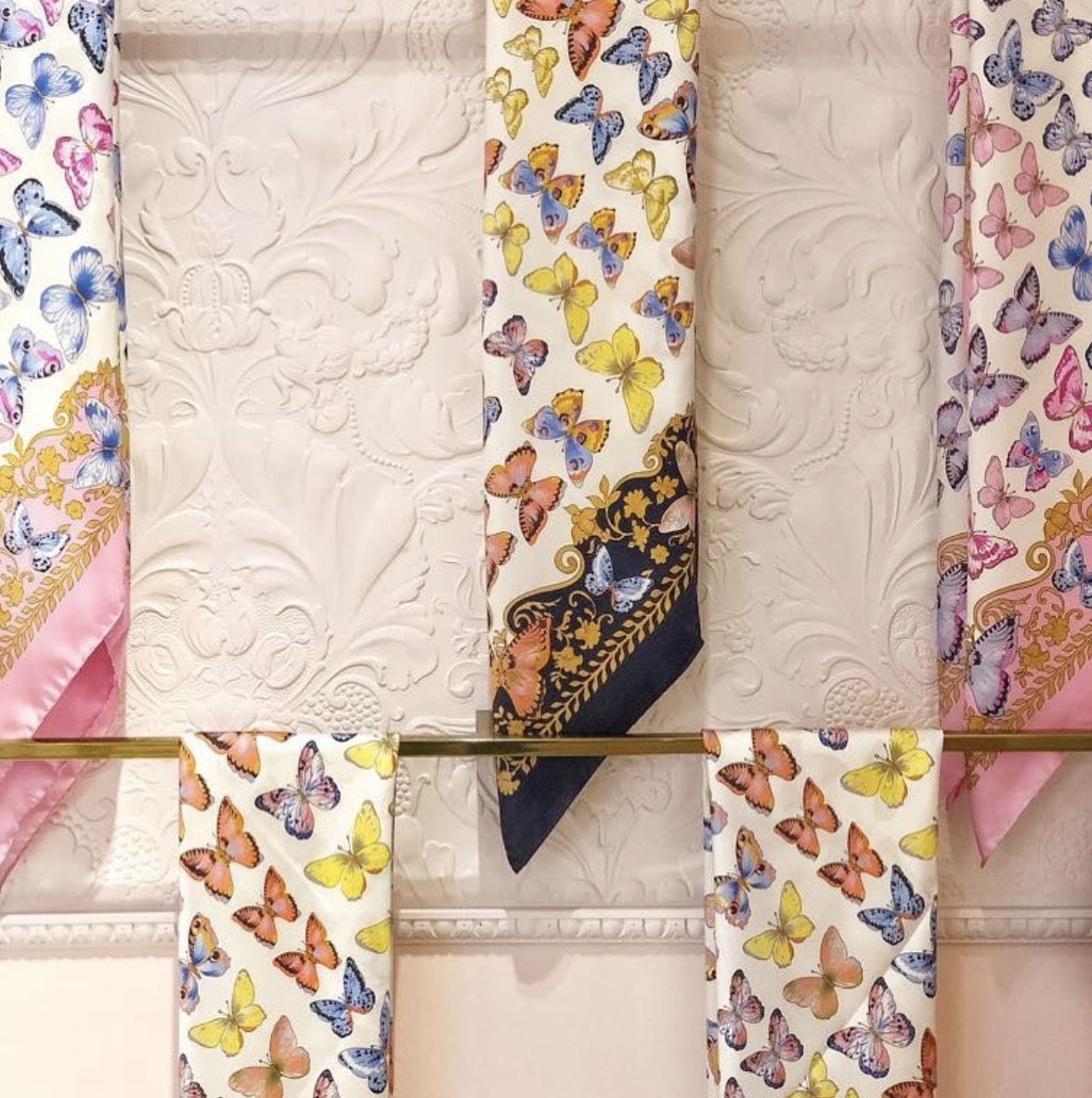
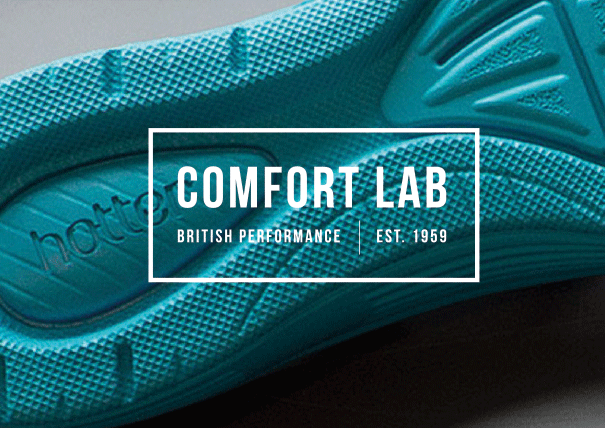
increased brand loyalty and repeat business
Increasing brand loyalty through a compelling destination in store experience can deliver higher levels of repeat business, and achieve growing revenue, if the correct retail brand strategies are in place at the outset of the concept creation.
Given the huge appetite for newness it is essential to build in principles in the retail store design for elements to be easily updated so that the store environment does not feel static, and expected, but dynamic, fluid, and with always something new to discover.
Areas of particular focus should be window displays, and third windows, introducing a sense of constant change to these key areas, to increase customer perception of change and newness, and encourages customers to explore what's new to discover, and increase foot traffic, and providing reasons to return, delivering higher frequency of visits.




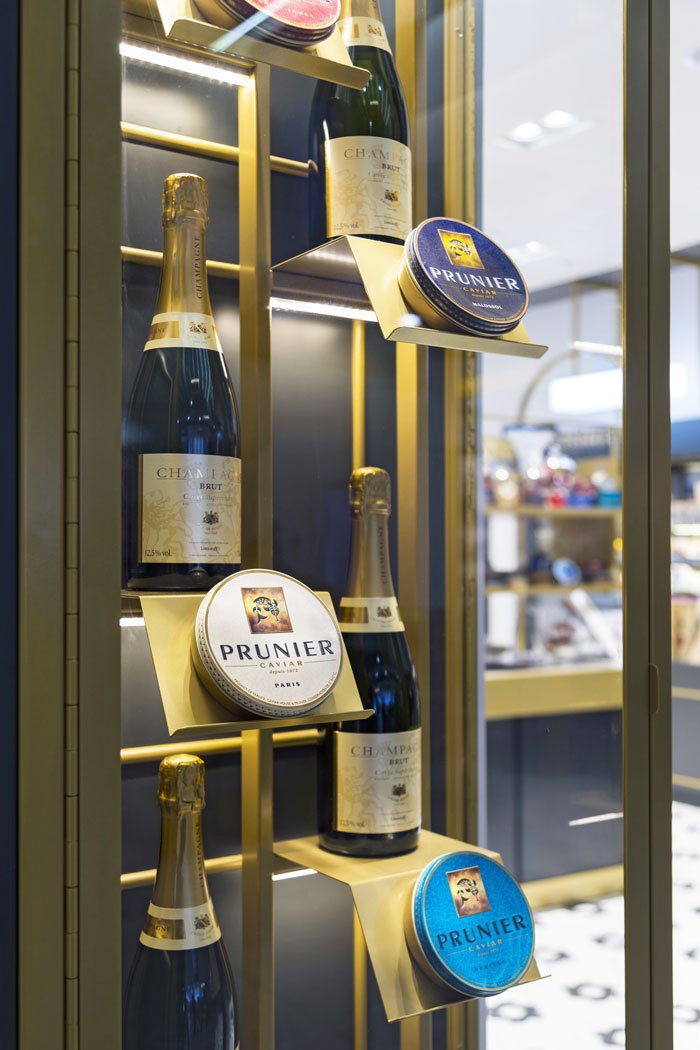

memorable retail design environments for physical stores
One of the key elements of any robust retail store design brief is the consideration of creating strong retail brand memories. Ensuring that the store concept and customer experience takes account of creating those micro moments that are unique to that brand and articulating it's 'own-able' and distinctive brand story.
Whilst digital brands who are new to physical retail tend to be more open to fresh thinking in in store retail brand strategies, and in store experiences, legacy brands, with larger estates, are often more constrained not only because they tend to have/inherited larger number of stores, and therefore the capital investment required to transform their retail environments is often prohibitively expensive.
They are often constrained by the fact that whilst they need to attract new younger consumers without alienating their core customer base.
This is exactly the scenario that our client, Ragno, an Italian fashion brand, with its roots in manufacturing in Northern Italy since 1879 had when they embarked on a strategic shift from a manufacturing to brand, customer focus. The key aim was to showcase their manufacturing/textile expertise as a customer benefit of superb fit, high quality and comfort.
Key elements were a focus on using textural materials in the concept to reinforce their expertise, and rich heritage in textiles, together with a central merchandising feature to highlight their iconic feature product of trousers.
A much loved retail business, with a strong retail brand, high customer recognition, and place in its local community, the brand adopted successful retail branding strategies in a radical reinvention of their brand identity and retail environment and in store experience.
The bold approach has already paid off, driving higher footfall, longer dwell times, higher conversion and larger basket size. Equally, with an elevated store concept, the value for money perception has improved, where customers feel that the product is more special and desirable, and offers more value for money.
Equally, a retail business with a sizeable store network, and multiple locations, may choose to gently consistently evolve, and 'layer in' fresh new brand design elements over time can be a cost effective way of keeping the in store customer experience fresh and relevant, and where the brand can be confident that they are not investing in a store concept that is already dated.
In such a competitive market context where customer expectations are high, it is essential that a retail business carefully considers their store refurbishment budgets in the context of investing in elements that are customer facing and directly impact customer loyalty, brand perceptions.
In the fashion sector, brand loyalists expect so much more from the brands they love, they want to immerse themselves in the brand story and narrative, and believe in the brands that they invest in.



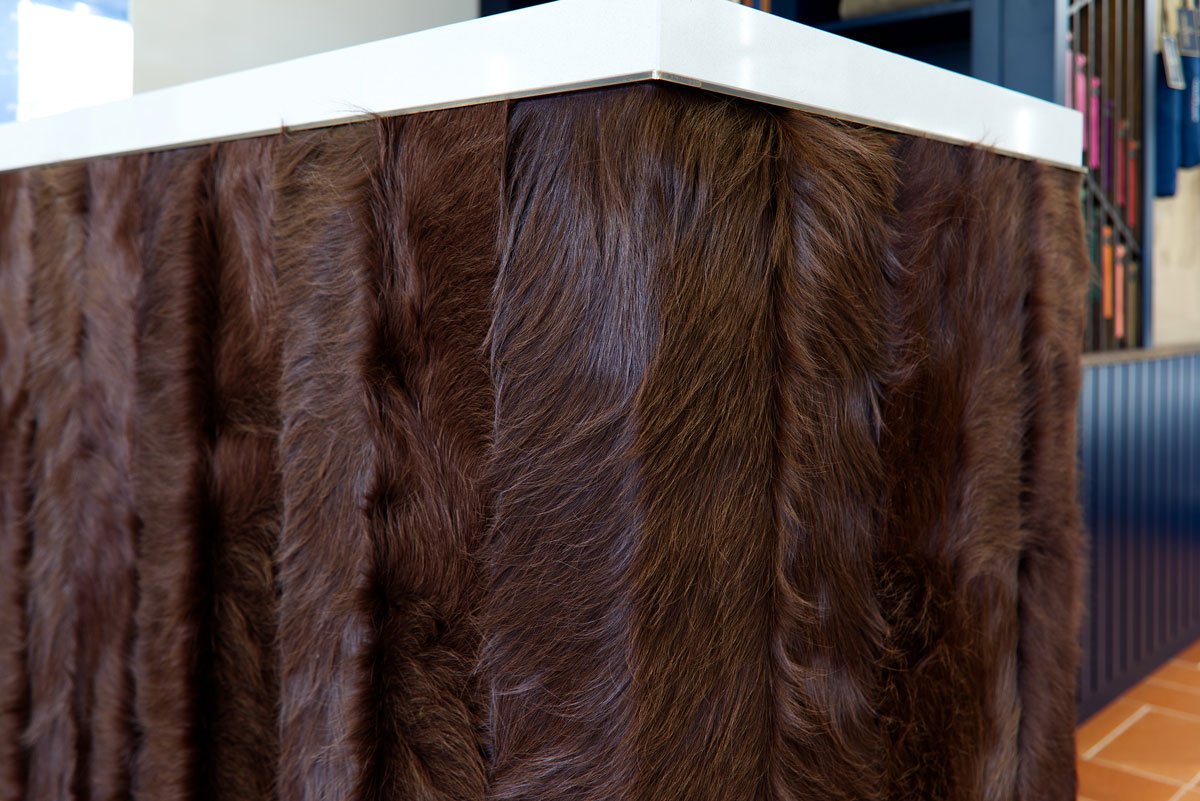
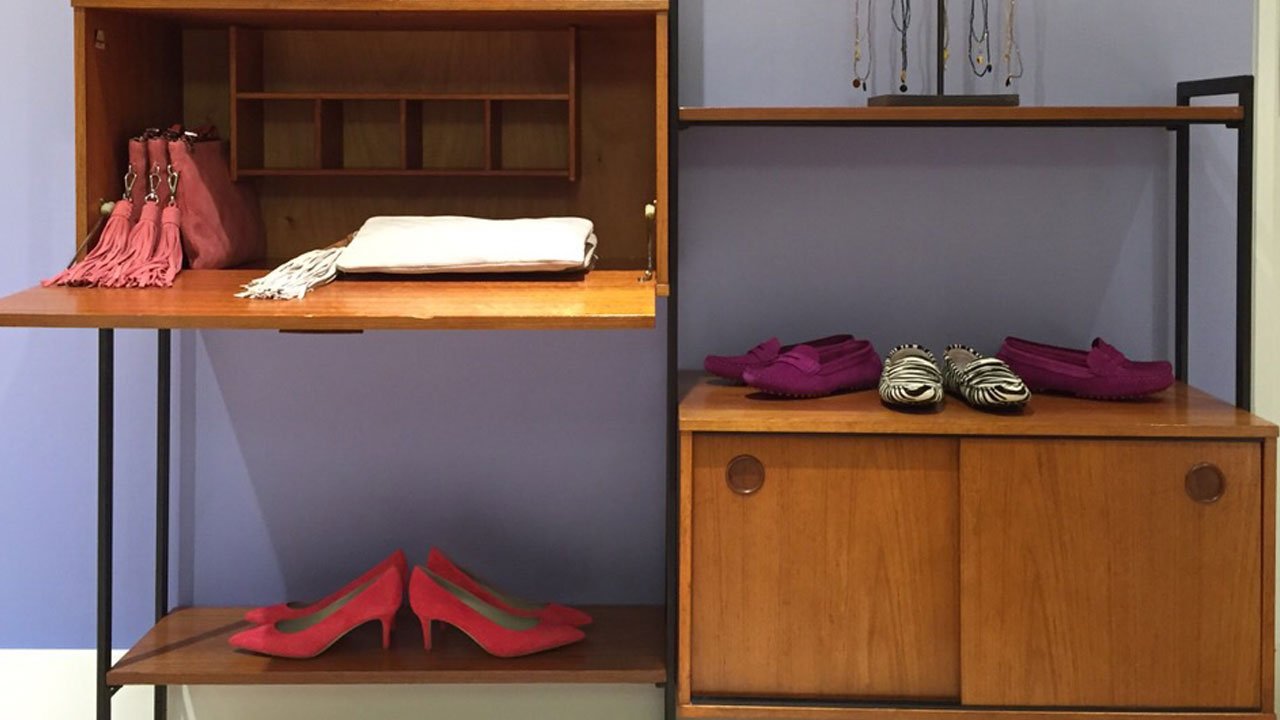
store design for customer comfort
The store design plays a valuable role in customer brand recognition, amplifying and reinforcing the brand world, and brand aesthetic, and building emotional connection.
For example, recognising that fitting rooms are a key conversion area, and therefore a strong contributor to growing revenue, is something which fashion retail brands routinely fail to exploit. This attitude is more prevalent in legacy brands who tend to focus more on devoted as much space a possible to product.
Ensuring that fitting rooms are not only comfortable and spacious with flattering lighting, can increase dwell time, and also facilitate a closer relationship, and promotion of excellent customer service, with the store teams who are more able to provide personal shopping, style advice, and promote add on sales. It can also create more micro moments and customer experiences that promote customer loyalty and make customers perceive the brand more positively, as they feel more special and valued.
Creating a sense of customer comfort in this way directly plays into nurturing customer relationships, and fostering brand trust.
A sense of completeness of concept design is vital, in consistent brand identity and storytelling, ensuring that every touchpoint reinforces the brand aesthetic and brand world. Sensorial elements such as sound, but especially scent, are key to creating enduring brand memories, and reinforcing brand recognition.
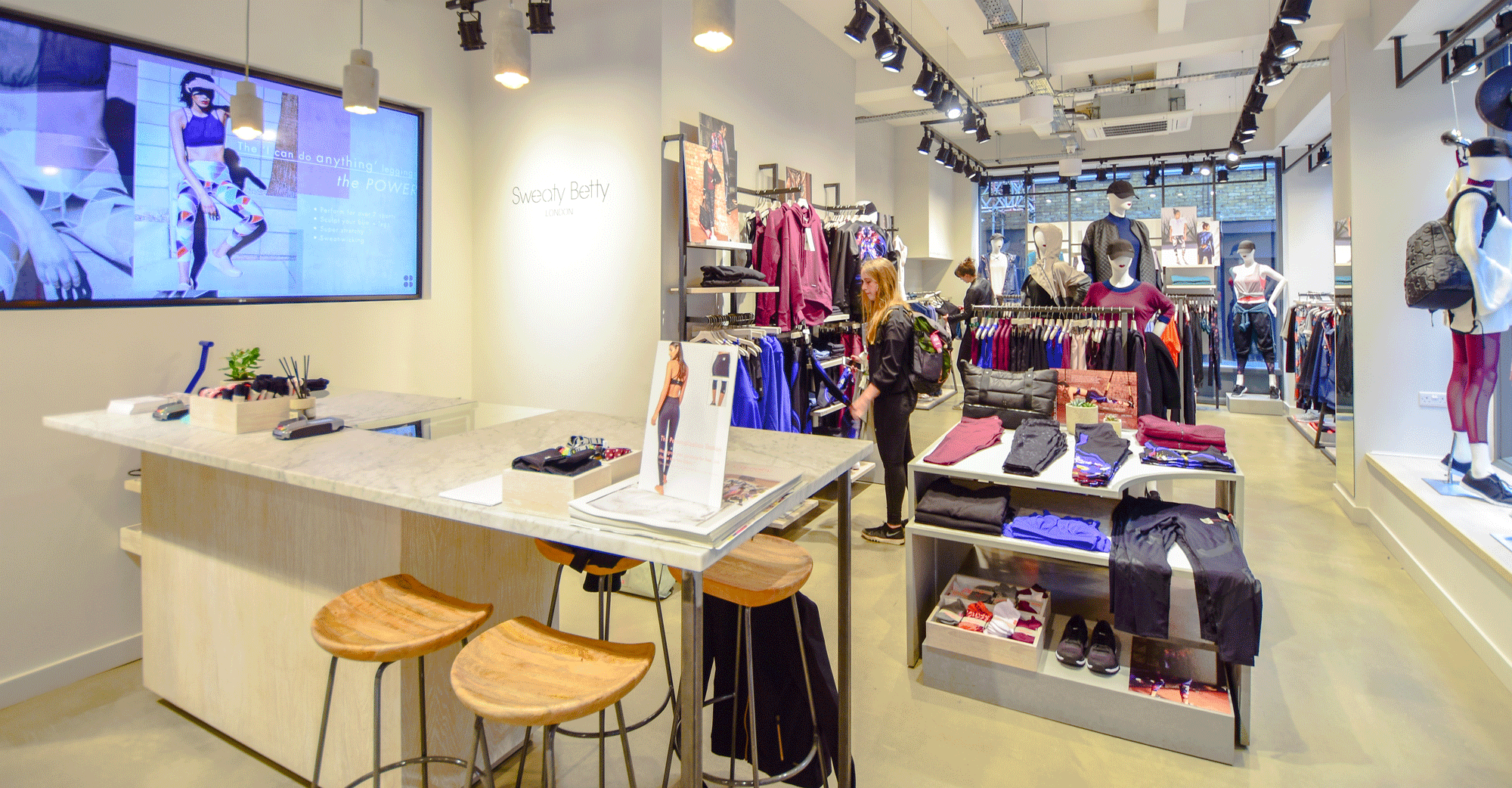


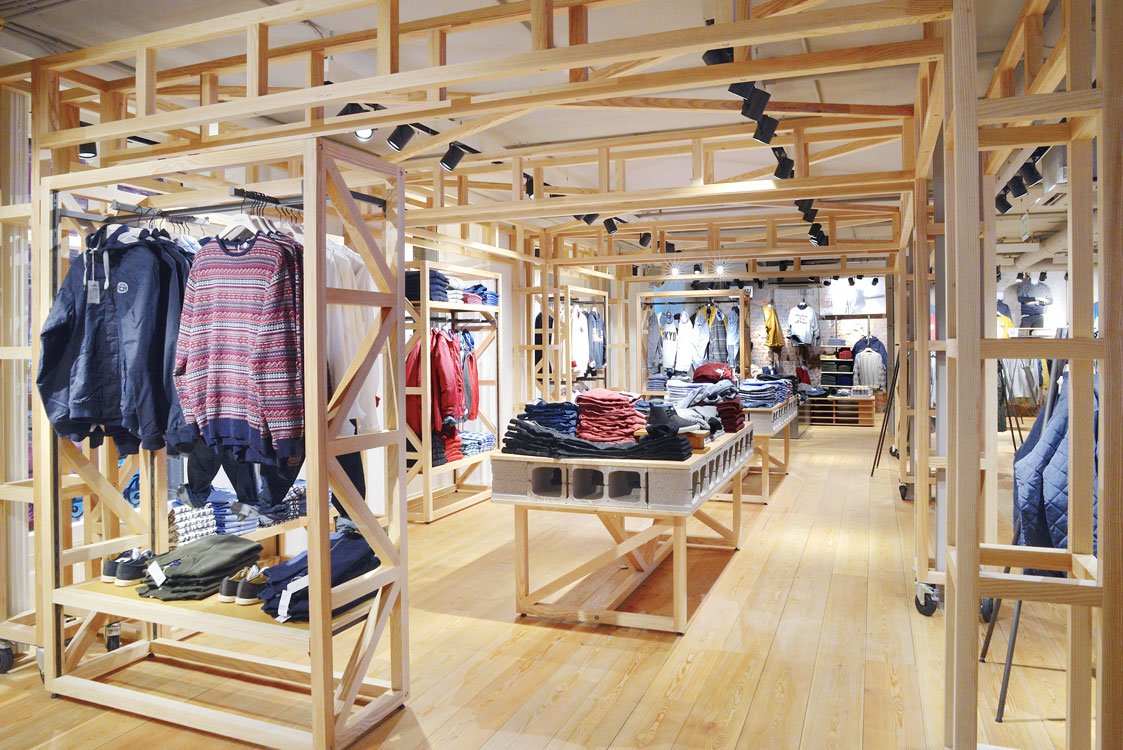


unique digital ideas for your retail brand
For the Ragno store concept, high quality digital design was introduced with digital window screens showcasing the fashion credentials of the brand, and create a sense of energy and dynamism around the brand. They provide a powerful tool in attracting the attention of passing traffic, and encouraging customers across the threshold to discover more.
They also play a prominent role in signalling change, with new imagery and campaigns introduced seasonally to retain customer interest and maintain high customer brand recognition and visibility.
Consistent brand identity and messaging was applied across all digital touch points, with the bold, colourful animation of the window screens then replicated in the third window entrance feature that showcases the range of trouser styles, and assists the brand aims in ensuring that this is the main product for which the brand aims to be famous, and most known.
Going from high level inspirational, emotionally engaging, fashion imagery to the next level of brand hierarchy which drills into different design, fits and colours of the trouser range invites customers to take a closer look at the brand, and discover more detail as they progress through the customer journey.
These different levels of digital communication and brand storytelling provide a consistency of brand storytelling from promoting brand values then layering into more detail product narrative, mirroring the way customers navigate a store experience, from inspiring initial interest, through to fostering trust and reassurance as the customers progress to final purchase, which has been vital in growing revenue.
Through the store concept we have created the tools for our client to maximise the power and potential of digital marketing in store at all levels, from communicating brand values, through to enhancing sales conversion.

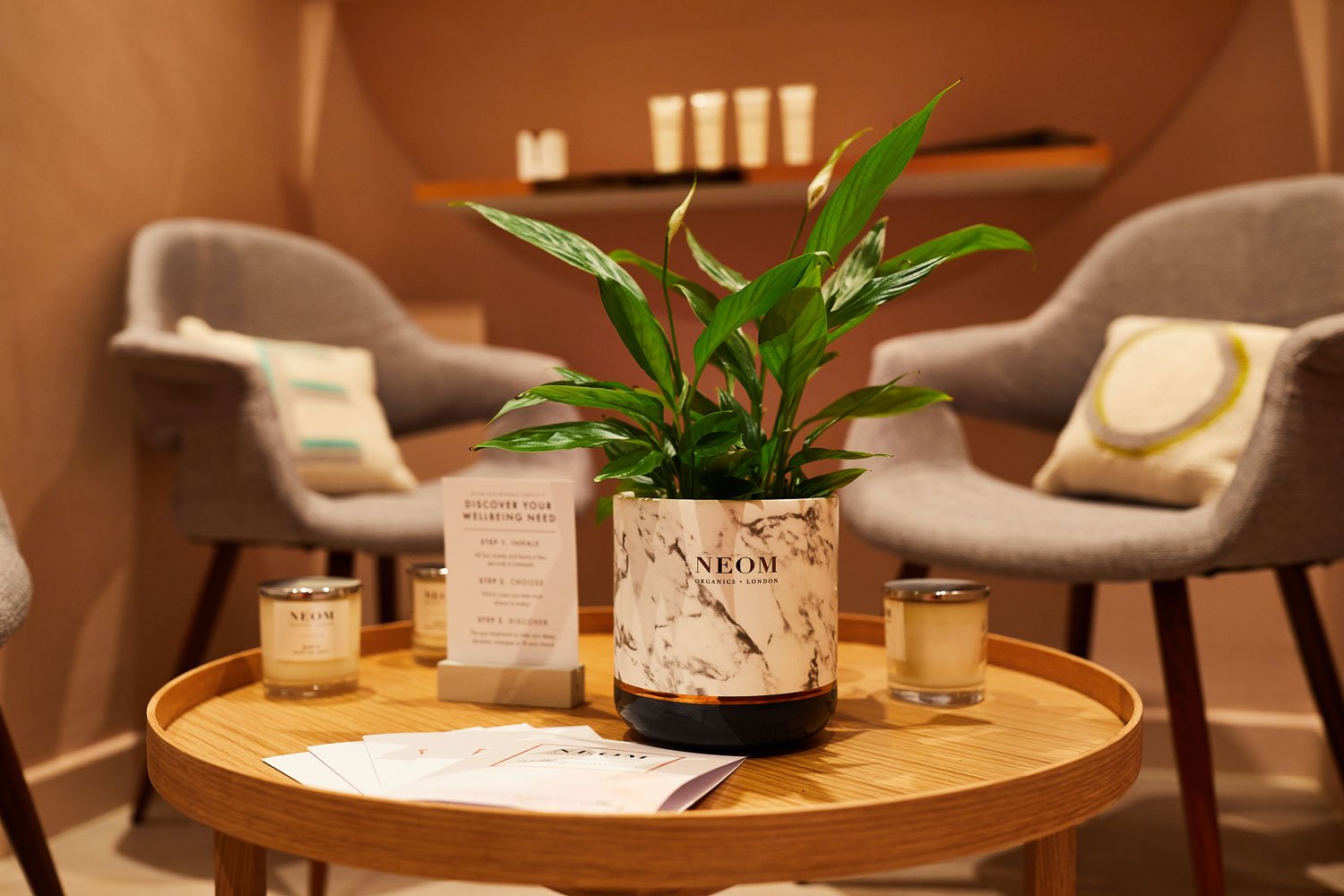
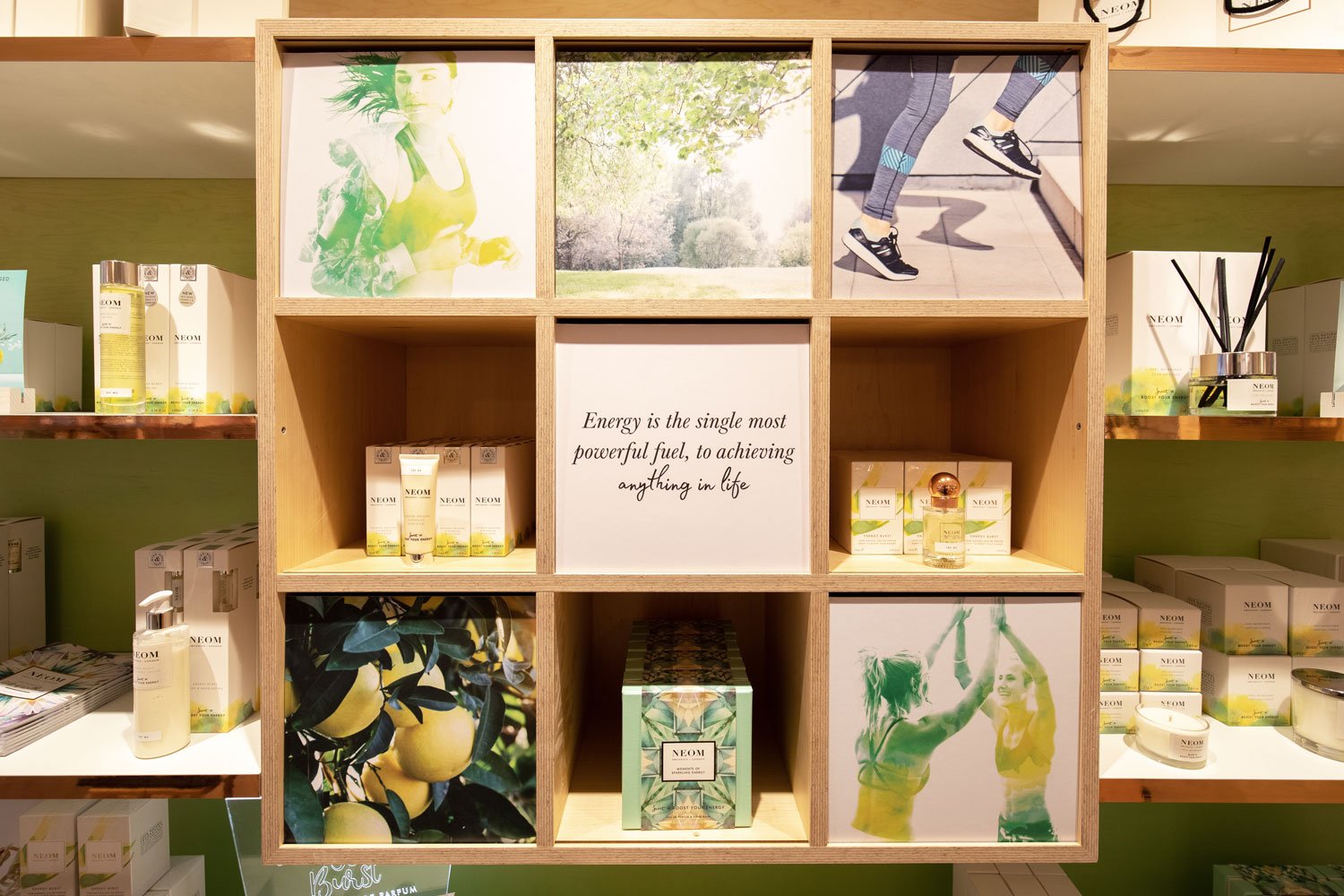



how to build a strong retail brand
All successful retail brands possess a compelling brand identity, a unique brand story that reveals their essence, their brand point of view, and gives their target audience compelling reasons to engage.
A successful brand retail store is entirely dependent on the power and emotional resonance of this story.
Sometimes a brand, at the outset of our working partnership, ask us to help them define their brand essence and vision, and articulate their brand story. We have talented brand strategists in our team who provide an invaluable resource to our clients who do not have this clarity of brand essence in place.
Once a clear brand strategy is in place then the goal is to express and amplify this in a clear, compelling, distinctive and visually arresting and memorable way.
The brand story should come alive in every dimension of the customer experience in order to gain maximum cut through, and ensure that wherever the customer touches and sees the brand, it is beautifully consistent, and more importantly, could only be that one singular brand.
Mapping out and establishing the emotional brand territory and then occupying and defending ones brand space is essential to protecting brand equity and territory, and also deterring competitors and would be imitators.
The same narrative needs to weave through all marketing materials, product packaging, online communication, social media platforms, and, of course, one of the most important channels of all in terms of relating to the customer in real life, the store experience.
By honing this narrative at the outset a brand is in a strong position to create a robust and rich brief, to consider how they want their customers to feel, and what memories and moments they want to create. They can consider how they want their customers to feel about them, and how they would talk about them, and what stories they would want their customers to share about the brand.





























why choose us?
Whether the brand is a heritage brand that wants to become relevant to a new audience whilst retaining loyal customers, our skills and experience in working with a number of iconic heritage brands from Hackett, to Ragno, to Gina makes us the ideal brand partner.
With Merkal, an established brand we worked with them to create the Alpaso store experience which allowed them to cultivate a strong retail brand identity in the fast growing comfort footwear market.
If you are an emerging brand and want to prepare for the next stage of growth and expansion, and require a successful branding strategy our track record with brands such as Fairfax & Favor means that you can be confident of hands on expertise to craft successful brand strategies.
Many of our clients were once emerging brands, such as White Company and Jo Malone, have become household names. We partnered with both brands in their progression from online shopping and catalogues to brick and mortar stores. In the instance of Jo Malone, the concept travelled globally, both with own retail stores and shop in shops.
We are an experienced team who firmly believe in a close and collaborative working relationship, pivoting quickly, and being agile when circumstances and competitive contexts shifts in a fast moving and highly competitive retail industry.
We have a reputation not only for high quality work, but delivering successful outcomes, and truly listening to our clients and understanding their individual and specifics challenges. This is evidenced by the long standing partnerships we have with our clients who return to us, time and again.
In recent years we have worked on multiple stores for Fairfax & Favor, an emerging brand, and Ragno, a heritage brand who is now attracting younger brand fans, in their growing number of own brand stores.
Many of our clients are extremely busy and rely on our global market knowledge and insights to help keep them informed of relevant trends.
Our skills and expertise begins with strategic input, concept creation, strong retail branding, and execution, from beginning to end of creating a bold, robust brand vision and then bringing that vision to life across all channels.
















